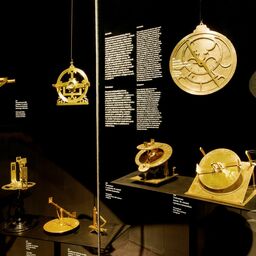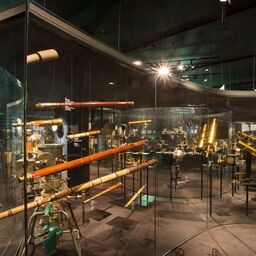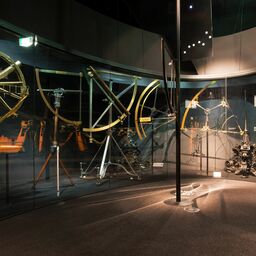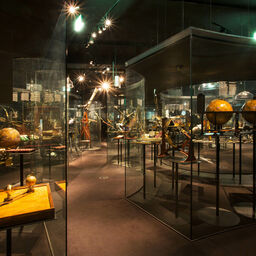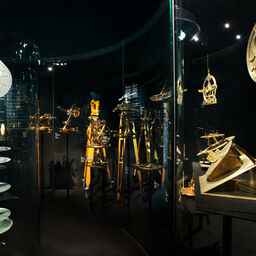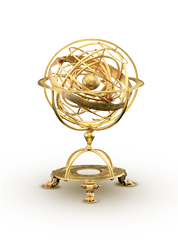- Úvod
- Exhibitions
- Permanent exhibitions
- Astronomy
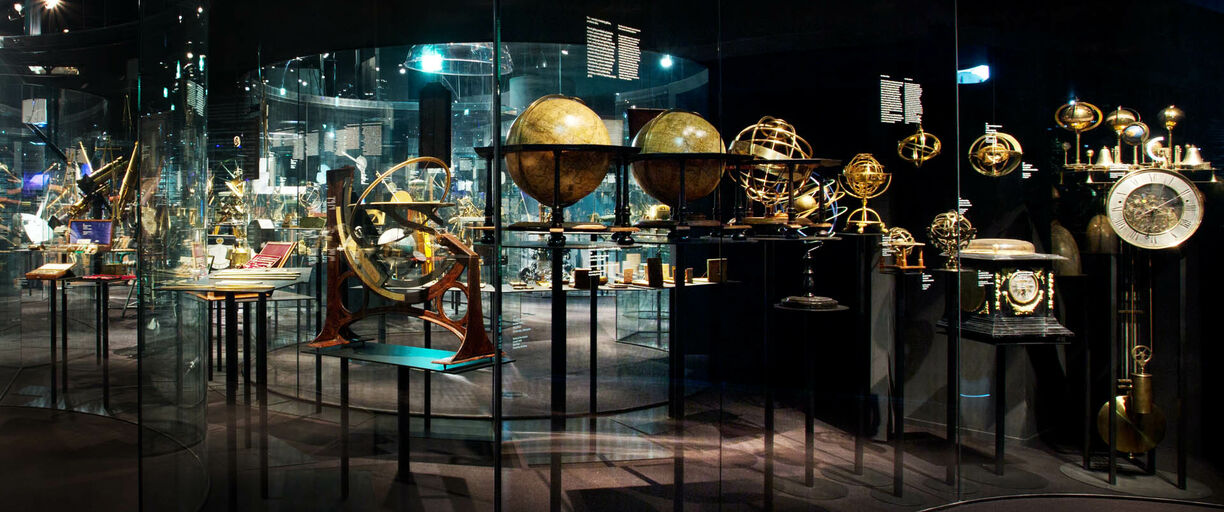
Astronomy
The exhibition presents astronomy as one of the oldest fields of human knowledge. Astronomy has a long tradition in the Czech lands and maintains a good reputation up to the present day.
In this exposition we can find the most important collection of astronomical instruments in the Czech Republic. In the first part, the development of the field is presented through various media. Animated film stories zoom in and illustrate how measurements were made with astronomical instruments. The exhibit showcases more than two hundred remarkable instruments from the 15th to the 21st century, including clocks, sextants, telescopes, theodolites and many others. In addition to the originals, demonstration items are presented, which give visitors a chance to try and perform measurements in practice. Among the illustrative examples there are a number of working models such as a sundial, an astrolabe, a quadrant, a telescope and a planetarium.
The entryway to the exhibition shows the development of the field of astronomy and the important milestones in its history. An attractive exhibit right at the beginning is an iron meteorite intended for visitors to be able to touch freely. Furthermore, the exhibition introduces a number of unique pieces from the collection in several areas: sundials, angle measuring instruments, astrometric instruments, drafting and mathematical aids, telescopes and demonstration instruments. The exhibition displays 220 instruments used by astronomers, surveyors, sailors and cartographers from the 15th to the 21st century. Among the objects of key importance for the history of science is Jost Bürgi's sextant from the turn of the 16th and 17th centuries. It was used by Johannes Kepler, the mathematician of Emperor Rudolf II, for making observations. He used the measurement of the orbit of Mars to publish the laws of planetary motion. The NTM collection also includes the sextant of Erasmus Habermel, another top instrument maker of that era in Prague. A late Gothic astrolabe from the mid-15th century is the oldest instrument in the collection. Among the tools for measuring angles and navigation, there are old devices displayed such as: a Jacob's staff, torquetum, compass, marine chronometer and mirror sextant, as well as modern devices: a total station theodolite, a circumzenithal instrument and GPS navigation system used to determine the exact position on Earth. The set of telescopes represents several interesting constructions of Czech technicians from the 20th century, among which the coronagraph of Karel Hermann-Otavský is predominantly displayed. Engelbert Seige's cabinet clock from the late 18th century shows the movements of the stars in the sky, the Sun, planets and moons, as well as calendar and astronomical data.

